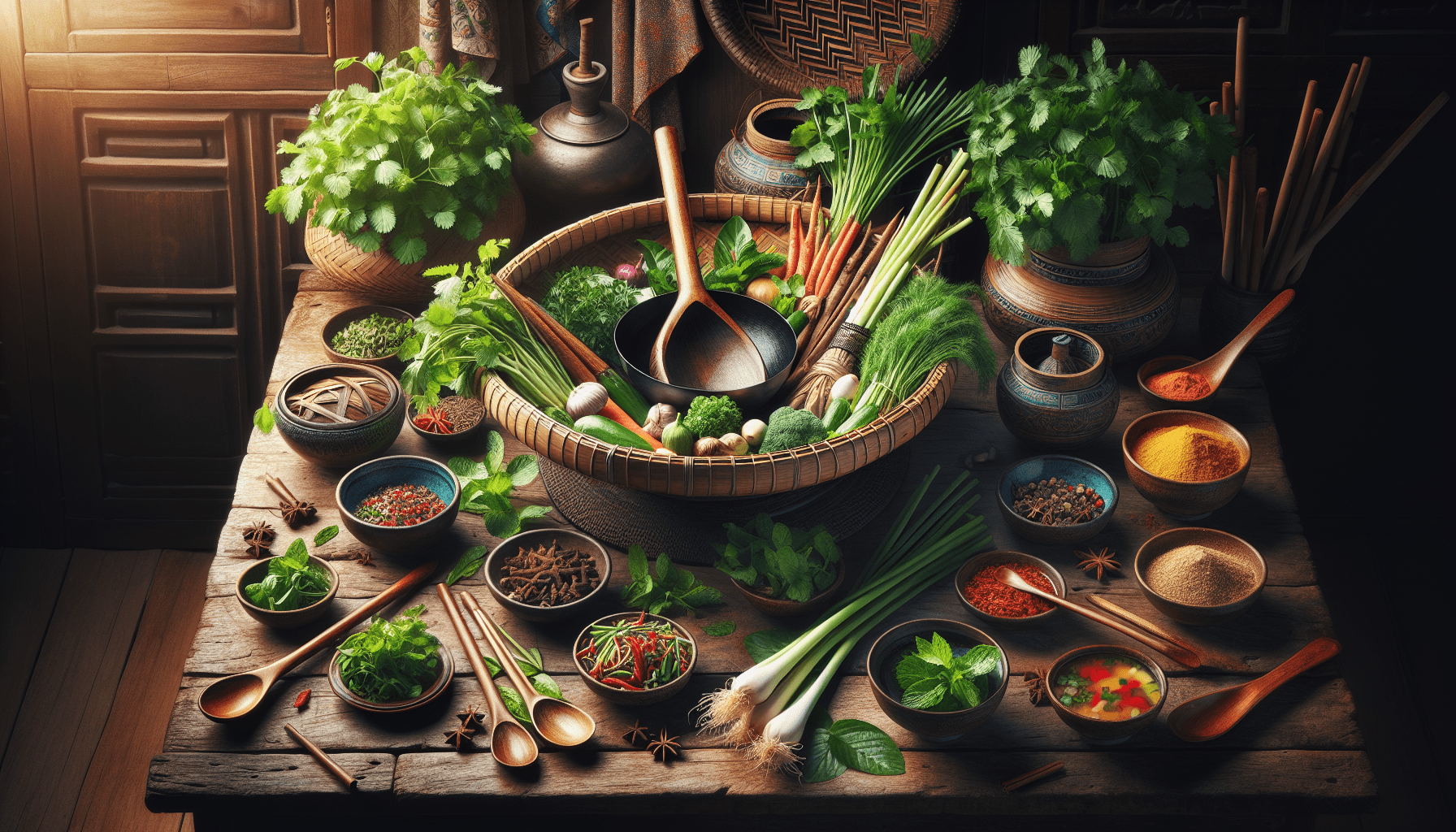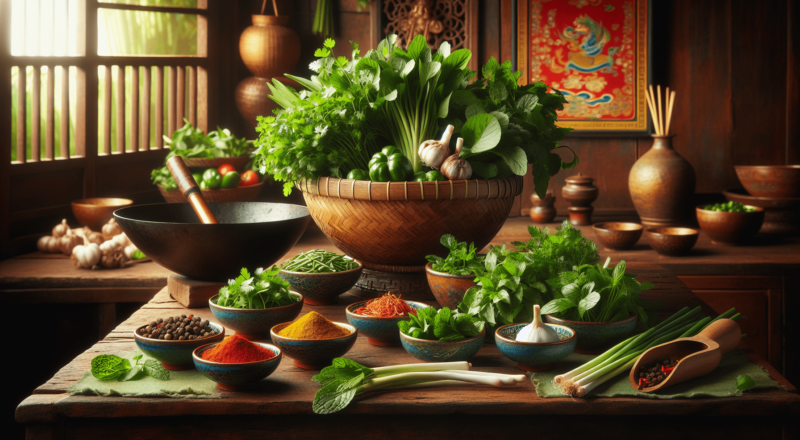Have you ever wanted to bring the aromas and flavors of Vietnamese cuisine into your own kitchen?
Embrace the Richness of Vietnamese Cuisine
Vietnamese cooking is famous for its balance of fresh flavors, vibrant colors, and healthful ingredients. It’s a cuisine deeply connected to its culture and traditions, making it a fascinating subject to learn. When you participate in a cooking class in Ho Chi Minh City, you not only learn to prepare delicious dishes but also gain insights into the cultural significance behind each ingredient and cooking method.
Why Choose Ho Chi Minh City for Cooking Classes?
Ho Chi Minh City, formerly known as Saigon, serves as the economic heart of Vietnam. With its bustling markets, delicious street food, and rich history, the city is a perfect backdrop for culinary exploration. The vibrant atmosphere offers an ideal setting to immerse yourself in the local culture while honing your cooking skills.
The Benefits of Taking a Cooking Class
Taking a cooking class offers several advantages:
-
Hands-On Experience: Nothing beats the hands-on practice of cooking. You’ll get to chop, stir, and taste as you go, leading to a deeper understanding of the culinary techniques.
-
Local Guidance: Having a local chef as your instructor allows you to receive tips and insights that you might not find in a cookbook.
-
Cultural Connection: Food is a reflection of culture. Learning to cook traditional dishes connects you to the local traditions, customs, and history of Vietnam.
-
Social Interaction: Cooking classes are a great way to meet new people. You’ll share laughs and stories as you prepare meals together.
What to Expect in a Vietnamese Cooking Class
Attending a traditional Vietnamese cooking class is an exciting journey through flavors. Here’s what you can expect during the experience.
A Warm Welcome
In many cooking schools, you’ll begin with a warm welcome from instructors who are passionate about sharing their culinary expertise. They often greet you with traditional Vietnamese tea, showcasing the country’s hospitality.
Market Visit
Often, the class starts with a visit to a local market. This can be one of the highlights of the cooking class. Wandering through the market, you will encounter a diverse array of fresh produce, spices, and seafood. You might even find a chance to practice your language skills as you interact with local vendors!
| Market Items | Description |
|---|---|
| Herbs and Spices | Fresh herbs like basil and mint are essential in Vietnamese dishes. |
| Rice and Noodles | Rice is a staple, with various types of noodles like pho and banh pho. |
| Vegetables | Bright, fresh vegetables enhance the visual and taste appeal of dishes. |
| Seafood | Freshly caught seafood is prevalent in many Southern Vietnamese dishes. |
Learning Cooking Techniques
Once you return to the cooking class location, the real fun begins. Instructors provide you with a hands-on experience, guiding you through various cooking techniques. Popular cooking methods include:
- Stir-Frying: A fast technique that retains the freshness and colors of vegetables.
- Steaming: This is often used for dumplings and fish, preserving nutrients.
- Grilling: Flavors are intensified when grilling meats or vegetables over an open flame.
Crafting Iconic Dishes
You’ll get the chance to prepare some iconic Vietnamese dishes. Here are a few you might encounter during your class:
-
Pho: This aromatic noodle soup is a beloved national dish, made with clear broth, rice noodles, fresh herbs, and meat (usually beef or chicken).
-
Gỏi Cuốn (Spring Rolls): These fresh rolls are made with rice paper and filled with shrimp, herbs, rice vermicelli, and vegetables, often served with a dipping sauce.
-
Bánh Xèo (Vietnamese Pancakes): These savory pancakes are crispy and made with rice flour, turmeric, and coconut milk, filled with pork or shrimp and bean sprouts.
Each dish not only boasts a distinct flavor profile but also represents different regions and traditions within Vietnam.
What Ingredients Will You Use?
Understanding your ingredients is key to mastering Vietnamese cuisine. Here’s a breakdown of common essentials you’ll likely use in your class.
Fresh Herbs
Herbs play an integral role in Vietnamese cooking, adding fresh flavors and garnishes to dishes.
| Herb | Flavor Profile |
|---|---|
| Basil | Sweet and slightly peppery |
| Mint | Refreshing and cooling |
| Cilantro | Bright and citrusy |
Rice and Noodles
Rice is a staple food in Vietnam, serving as the base for many dishes.
- Jasmine Rice: Fragrant and fluffy, it’s perfect for pairing with savory dishes.
- Bánh Phở: These wide rice noodles are essential for making pho.
Seafood and Meats
Fresh seafood is abundant in Vietnam, particularly in Ho Chi Minh City.
| Ingredient | Common Dishes |
|---|---|
| Shrimp | Used in gỏi cuốn and bánh xèo |
| Pork | Commonly found in various stir-fries |
| Chicken | Often used in pho and other soups |
Spices and Seasoning
Special spices elevate the flavor of dishes to another level.
| Spice | Usage |
|---|---|
| Fish Sauce | A key ingredient in many Vietnamese dishes, adding umami flavor. |
| Chili Peppers | Fresh or dried, they add heat to various dishes. |
| Sugar | Balances flavors in sweet and savory combinations. |
Additional Tips for Your Cooking Class Experience
To maximize your cooking class experience, keep these tips in mind:
Dress Comfortably
Make sure to wear comfortable clothing that you don’t mind getting a little messy. Closed-toed shoes are preferable, especially if you’re standing for a while.
Be Open to New Flavors
Don’t hesitate to try new ingredients or dishes that you might be unfamiliar with. Every taste is an opportunity to expand your culinary horizons.
Ask Questions
Engage with your instructor and ask questions. Whether it’s about cooking techniques or cultural aspects of the dishes, make the most of your time there.
Take Notes
Consider bringing a notebook to jot down tips, tricks, and recipes. This will be invaluable when you try to recreate these dishes at home.

Making the Most of Your Class
One of the joys of taking a cooking class is the chance to share a meal with fellow participants after the cooking is done. This experience can deepen the connections you’ve made during the class and provide an opportunity to discuss your culinary adventures.
Enjoying Your Meal
Sitting down to enjoy the fruits of your labor is one of the most satisfying parts of a cooking class. As you savor the meals you’ve prepared, reflect on the techniques you’ve learned and the culture that frames these dishes.
Sharing Stories
Take this time to share stories with your cooking companions. Ask each other about your backgrounds, culinary experiences, and what brought you to this class in Ho Chi Minh City.
Taking Photos
Remember to capture the moments! Take photos of the dishes you’ve made and the people you’ve met. This not only serves as a great memento but can also inspire you when you recreate these dishes at home.
After the Class: Recreating Vietnamese Dishes
Once you’re back home, you can use the skills you’ve acquired in the cooking class to delight your family and friends with your newfound Vietnamese culinary skills.
Staying Connected
Many cooking schools provide recipes after your class, making it easier to recreate the dishes. You might even consider following the school’s social media or website for new recipes and cooking tips.
Shopping for Ingredients
Finding authentic Vietnamese ingredients may vary depending on your location, but many Asian grocery stores carry essential items. Here are some tips:
- Local Markets: Check farmers’ markets or local Asian grocery stores for fresh ingredients.
- Online Shopping: Various online platforms offer Vietnamese cooking ingredients that can be shipped to your door.
Experimenting with Flavors
Feel free to experiment with the recipes you learned during the class. Consider adding your own twist by incorporating local ingredients or adjusting spice levels to suit your preference.
Conclusion
Embracing Vietnamese cooking through a class in Ho Chi Minh City offers an enriching experience that goes far beyond just learning how to make a dish. It opens you up to understanding the rich culinary history of Vietnam while allowing you to create lasting memories and friendships.
From sourcing local ingredients to experimenting back in your kitchen, the skills and knowledge you gain through this experience will serve you well for years to come. Each time you prepare a Vietnamese dish, you’ll be reminded of the wonderful moments spent in the bustling heart of Vietnam, where food is a way to connect and celebrate life.
So, are you ready to take the leap and bring the delightful flavors of Vietnam into your home?
